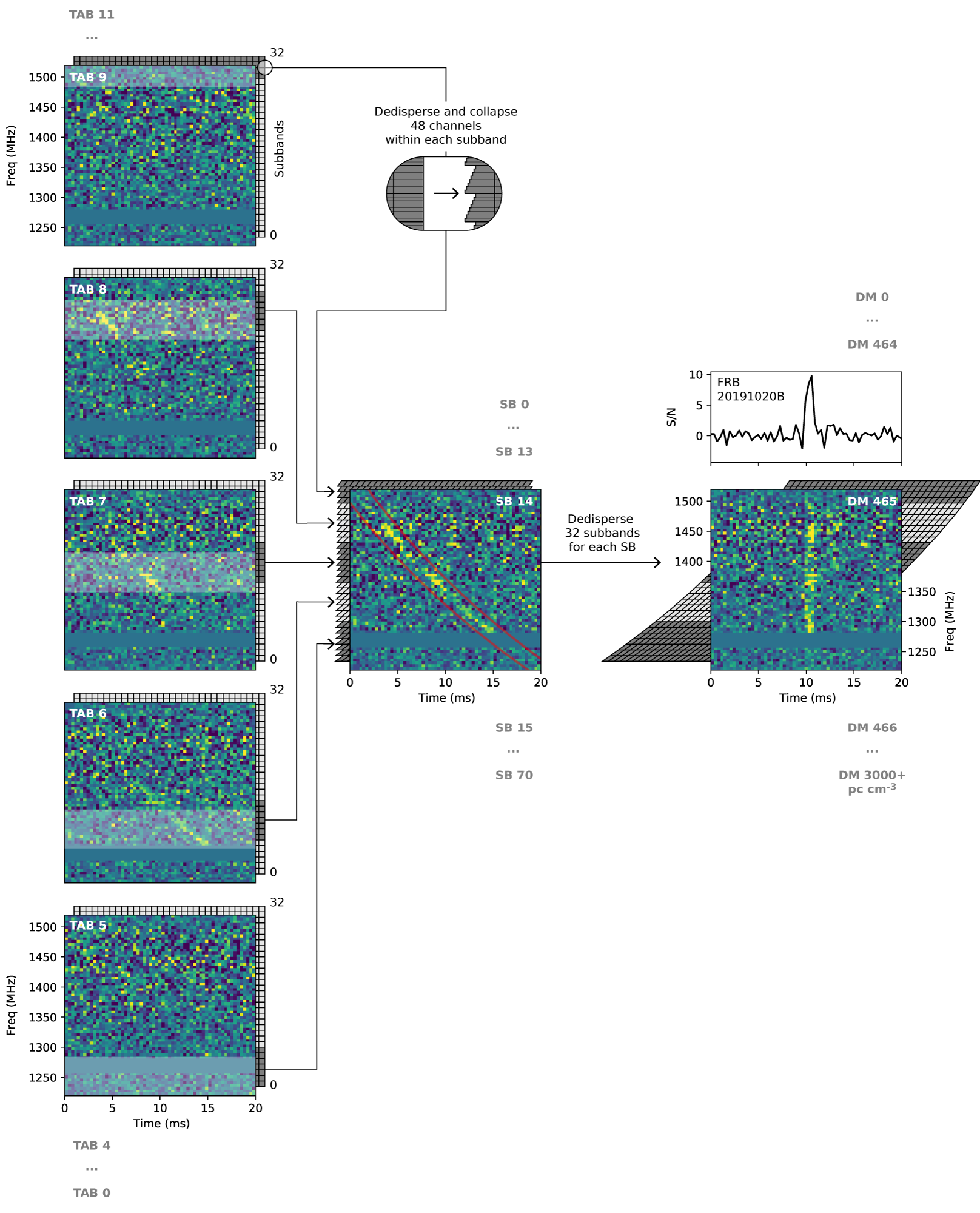Daily Image
19-09-2022How ARTS Finds FRBs - II: Intertwined Beamforming & Dedispersion
| Submitter: | Joeri van Leeuwen |
| Description: | The Apertif Radio Transient System (ARTS) is a supercomputing instrument that performed real-time detection and localisation of Fast Radio Bursts on Apertif at Westerbork. In a series of images we highlight some of the cutting-edge algorithms and instrumentation that allowed it to become the most productive FRB search system in the world. The overview paper, including the description of the first 5 FRB discoveries is submitted to A&A and available on arxiv (van Leeuwen, Kooistra et al. 2022). Featured Previously: I: Innovative Hierarchical Beamforming. Today: The formation of the Synthesized Beam (SBs) during subband dedispersion. In the Apertif FRB survey (ALERT), we exploit the bright sidelobe response of the WSRT Tied-Array Beams (TABs) to massively increase the Field of View. This response, however, also presents a degeneracy in the location of a detected event. We may not know through which grating sidelobe the signal is coming in. Fortunately the grating responses are frequency dependent (See AJDI I). A source slightly further from the phase center than the specific grating response of a certain TAB at e.g. 1500 MHz, may fall exactly in the grating response of that TAB at 1200 MHz. Thus, most grating responses will detect an FRB over limited frequency range. You can see this for yourself in the left-hand column of subpanels in the image above (Fig. 9 in the ARTS Overview paper v1 (arxiv); a stand-alone PDF of the image, for e.g., zooming in, is available here). The FRB that Apertif discovered (FRB 20191020B) originally is seen spread over 5 TABs, most strongly in the central 3 (TABs 6,7,8). To make a detection over the full bandwidth, the correct frequency-dependent TABs are combined to form a so-called Synthesized Beam (SB; middle column). In ARTS, 71 SBs are formed in each Compound Beam. One globally unique innovation in ARTS is that this Synthesized Beam formation is integrated into the so-called subband dedispersion. In AMBER, the ARTS dedispersion and searching pipeline (Sclocco, vL, et al. 2016), we implement dedispersion that is highly optimized for the all-important GPU memory limitations. It dedisperses in a highly efficient two-step "subbanding" process. By incorporating the SB frequency re-organisation into this subbanding, it comes with no additional computational cost. Yet these SBs now provide instantaneous localisation, as shown above. Going from the left to the middle column, the TABs are combined in units of subbands, each consisting of 48 channels. Each subband is first dedispersed to a coarse DM. For SB 14 the resulting intermediate time-frequency plot is shown in the center. We show this step here for clarity but in the production implementation it is optimized out as described above. In the second step of dedispersion, the subbands are aligned over 32 trial DMs. FRB 20191020B was thus detected as shown on the right. This ARTS FRB is among the narrowest Fast Radio Bursts ever found, packing a stupendous amount of energy into less then a millisecond. Thus, next time: Don't blink: the FRB sky in sharp view with WSRT. |
| Copyright: | vL |
| Tweet |  |
